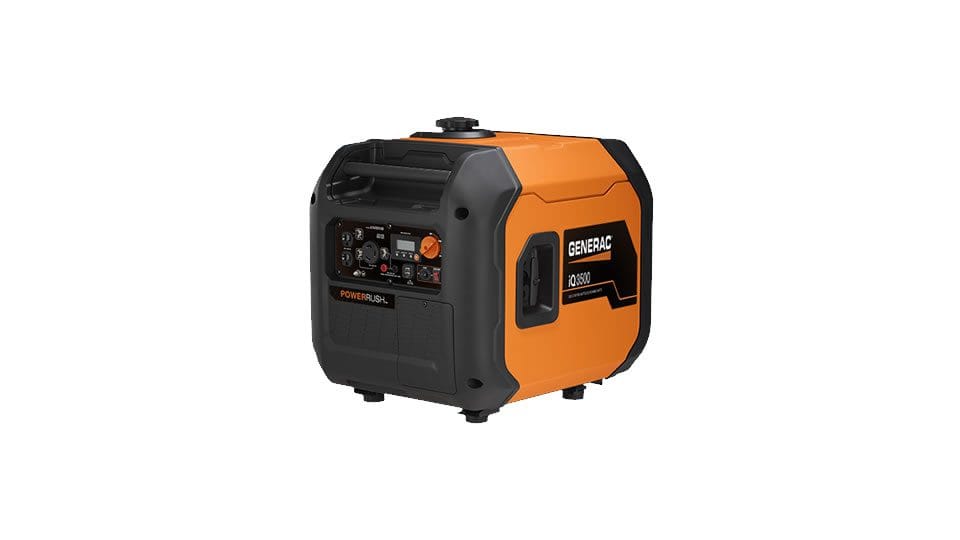Table of Contents
ToggleCan a Portable Generator Power a House? Essential Safety Tips
Can Portable Generators Power a House? The short answer is yes, but there are important safety precautions and guidelines to follow. From understanding your home’s power needs to safely connecting the generator and avoiding common mistakes, we’ve got you covered. In this guide, we’ll walk you through everything you need to know to power your home safely and efficiently. Let’s dive into each essential tip and keep your home running smoothly during any outage.
If you’re wondering, “Can a portable generator power a house?”, the answer depends on understanding your home’s power requirements. Before plugging in a generator, it’s crucial to know just how much electricity your essential appliances and devices consume. This not only helps you pick the right generator but also ensures you’re using it safely.
Start with the Basics: Calculate Your Power Usage
The first step is figuring out what needs power during an outage. Focus on the essentials—appliances like your refrigerator, lights, and heating or cooling systems. These are non-negotiables when the power goes out, and ensuring they stay powered is key to keeping your household comfortable and safe.
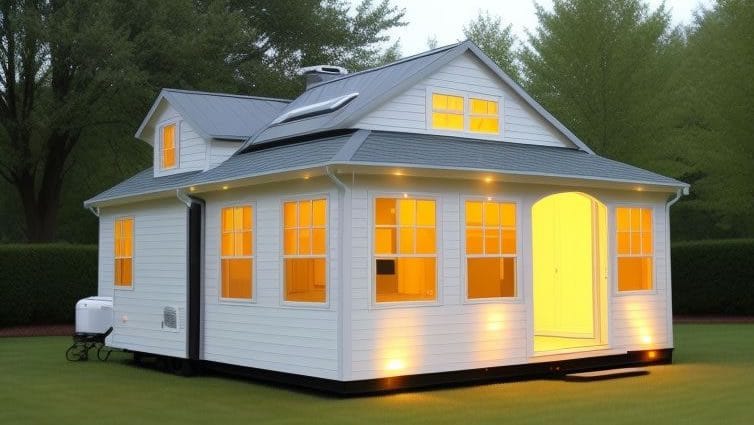
Every appliance has a power rating, typically listed in watts. For example, refrigerators use about 600 to 700 watts, while a space heater might need around 1,500 watts. You’ll need to add up the wattage for everything you plan to run at the same time. Keep in mind that some appliances have a higher starting wattage, meaning they need more power to turn on than to keep running. This is something you don’t want to overlook, as it can impact whether your portable generator can handle the load.
Prioritize Essential Appliances and Devices
Since a portable generator likely can’t power your entire home, it’s important to prioritize. What’s most important during a power outage? For most people, this list includes the refrigerator, lights, and possibly the furnace or AC unit, especially during extreme weather.
Make a checklist of your must-haves and rank them by importance. For example, while keeping your phone charged is handy, it’s not as critical as making sure your heating system works during a winter storm. Being strategic about what you power ensures that your generator runs smoothly and efficiently without getting overloaded.
Understanding Surge Wattage vs. Running Wattage
Not all watts are created equal! Appliances often need more power to start up than they do to keep running. This is called surge wattage or starting wattage. Once they’re on, the power usage drops to a lower, running wattage. So, when you’re calculating how much power your home needs, don’t forget to factor in this difference.
For example, a refrigerator might only use 600 watts to run, but it could require 1,200 watts to start. The same goes for other large appliances like air conditioners or pumps. If you’re not accounting for surge wattage, you could end up overloading your generator, leading to potential damage or worse, a complete shutdown. Make sure your portable generator can handle both the running and starting wattages of the essential appliances you plan to power.
Safety First: Don’t Overload Your Generator
While it might be tempting to power as much as possible during an outage, overloading your generator is a big no-no. Pushing your generator beyond its limits can cause it to overheat or fail, and in some cases, it could even damage your appliances.
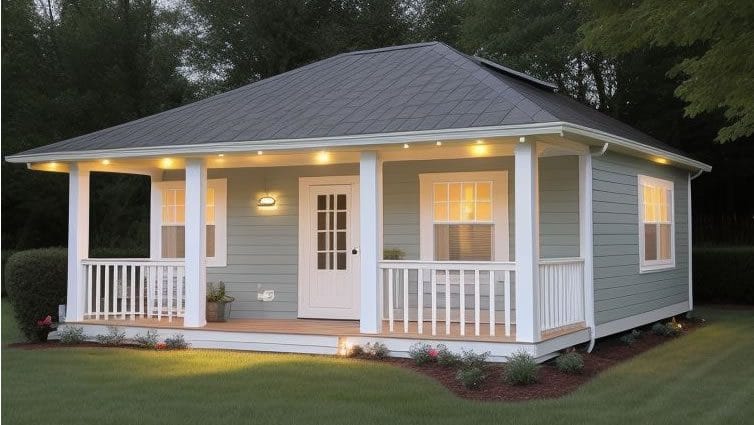
To avoid this, check the wattage of your generator and stick within its limits. If your generator can handle 5,000 watts, make sure the combined wattage of your appliances is less than that. It’s always better to be safe than sorry. You don’t want to be left in the dark because you tried to power too much at once.
Use Power Efficiently
When it comes to using a portable generator to power your house, efficiency is your best friend. If you’re smart about how you use power, you can get more out of your generator.
For example, turn off appliances or devices when you don’t need them. There’s no point in keeping all the lights on in rooms you’re not using. Also, consider using energy-efficient bulbs, as they use far less power than traditional ones. Another tip is to cycle appliances. Instead of running everything at once, alternate between appliances. For instance, run your refrigerator for a couple of hours, then unplug it and power something else like a space heater. This way, you can spread the power around without overloading the generator.
Monitor Your Generator’s Performance
Even the best portable generators can’t run indefinitely without a little TLC. Keep an eye on its performance, especially during extended power outages. Check fuel levels regularly, and if your generator uses oil, make sure to top it up when necessary. Some generators have built-in fuel gauges to help you monitor usage, while others may require a little more manual work.
Also, pay attention to how the generator sounds and operates. If it’s making strange noises or you notice fluctuating power, turn it off and check for issues. The last thing you want is for the generator to fail when you need it most.
Can Portable Generators Power a House?
When faced with a power outage, you might wonder if a portable generator can power a house. The answer largely depends on your home’s energy demands and the generator’s output capacity. Portable generators can supply power to essential appliances, making them valuable during emergencies. However, it’s crucial to assess your power needs, prioritize which appliances to run, and ensure proper safety measures are in place. In this section, we’ll explore how to determine if your portable generator can meet your household’s requirements and what you need to consider for safe and effective use.
When the power goes out, you might find yourself asking, “Can a portable generator power a house?” The short answer is yes, but connecting it safely is crucial to avoid any dangerous situations. Improper connections can lead to electrical shocks, fires, or damage to your appliances. Luckily, with a few essential safety tips, you can power your home confidently and securely during an outage.
1. Use a Transfer Switch: The Safe Connection
One of the safest ways to connect a portable generator to your home is by using a transfer switch. A transfer switch is a device installed by an electrician that links your generator directly to your home’s electrical panel. It allows you to easily switch between your utility power and generator power, without the risk of backfeeding.
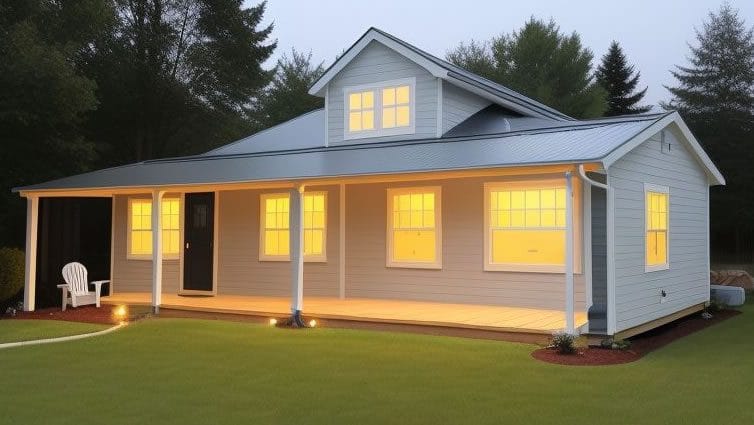
Backfeeding occurs when power from your generator flows back into the electrical grid. This not only poses a danger to utility workers but could also cause electrical fires. Using a transfer switch completely eliminates this risk, making it the safest method for powering your home during an outage.
The best part is that a transfer switch simplifies things. Once installed, all you have to do is flip a switch, and voila! Your generator is connected and ready to power your essential appliances.
2. Don’t Use Extension Cords as a Long-Term Solution
Sure, extension cords might seem like a quick fix to connect your generator, but they’re not ideal for long-term use. When it comes to safely powering your home, extension cords are more of a last resort. They can easily overheat, especially if you’re plugging in high-wattage appliances. Plus, running multiple extension cords through your house increases the risk of tripping hazards and electrical fires.
If you do need to use extension cords temporarily, make sure they’re heavy-duty and rated for outdoor use. You’ll also want to ensure they can handle the wattage of the appliances you’re powering. Avoid daisy-chaining multiple cords together, as this can overload them and cause overheating.
Always prioritize using a transfer switch when connecting your generator to your home, and save extension cords for smaller devices like lights or chargers.
3. Know Where to Place Your Generator: Keep It Outdoors
This might sound like common sense, but it’s worth repeating: always, always run your generator outdoors. Portable generators produce carbon monoxide, which can be deadly if inhaled. Running one inside your home or even in your garage can create a dangerous situation for you and your family.
Make sure your generator is placed at least 20 feet away from your house, with the exhaust pointing away from any doors or windows. You’ll also want to place it on a flat, dry surface, ideally under some type of shelter to protect it from the elements. However, don’t place it inside an enclosed structure, as this can trap carbon monoxide.
A good tip is to invest in a carbon monoxide detector if you don’t already have one. This will give you peace of mind by alerting you if dangerous levels of carbon monoxide are detected in your home.
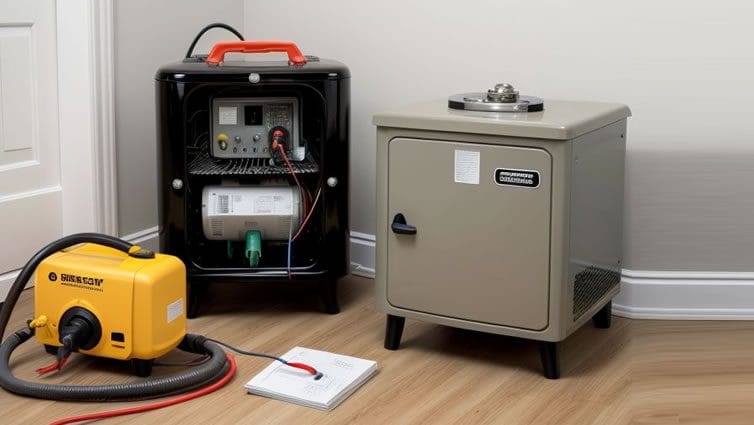
4. Handle Fuel with Care: Avoid Spills and Keep it Stored Safely
Fuel is the lifeblood of your portable generator, but it can also be dangerous if handled improperly. Always turn off your generator before refueling it, and let it cool down. Spilling fuel on a hot generator can lead to serious burns or fires.
Store your fuel in approved, leak-proof containers and keep them away from any open flames or heat sources. Make sure to check the fuel level regularly and keep extra fuel on hand during extended power outages, but store it in a well-ventilated area, far away from your home or generator.
Another safety tip is to avoid refueling your generator when it’s raining or snowing. You don’t want water getting into the fuel tank or causing electrical shorts. Instead, wait until the weather clears up, or better yet, refuel under a covered outdoor space.
5. Test Your Setup Before an Emergency
The last thing you want is to realize your generator isn’t working properly in the middle of a blackout. Avoid this by testing your setup ahead of time. Set up your generator, plug in your appliances, and make sure everything runs smoothly.
Pay attention to any strange noises or fluctuations in power. These could be signs that something’s wrong with either the generator or how it’s connected to your home. If you notice any issues, address them immediately, or call in a professional if you’re unsure.
It’s also a good idea to check your generator’s fuel levels and oil before an outage occurs. This ensures you’re fully prepared when you need it most.
6. Have an Electrician Install the Generator Hookup
If you’re not confident in your DIY skills, it’s best to leave the installation to a professional. An electrician can safely install the transfer switch and ensure that your generator is properly connected to your home’s electrical system. This eliminates any guesswork on your part and ensures that everything is up to code.
Hiring a professional might cost more upfront, but it can save you from costly mistakes down the line. Plus, you’ll have peace of mind knowing your home is safely powered.
Key Appliances You Can Safely Run on a Generator
When a power outage hits, the first question on everyone’s mind is: “Can a portable generator power a house?” While it might not run every single appliance at once, a well-sized generator can definitely power essential items that keep your home running smoothly. In this section, we’ll cover the key appliances you can safely run on a generator, along with safety tips to make sure everything runs efficiently and without risk. Let’s dive into which appliances you should prioritize and how to safely manage their power consumption.
1. Keeping Your Refrigerator and Freezer Cool
One of the first appliances you’ll want to keep running during a blackout is your refrigerator and freezer. After all, you don’t want your food spoiling just because the power went out! The good news is that most portable generators can easily handle the wattage needed to run both a fridge and a freezer.
A typical refrigerator/freezer combo uses between 600 and 1200 watts, depending on the model and age. When running a generator, it’s a good idea to plug in your refrigerator and freezer right away. You can even unplug them for a few hours at a time to conserve power, as they’ll stay cool for a while without constant electricity. But remember, never overload your generator with other heavy appliances at the same time.
2. Powering Essential Lights and Electronics
Even during a power outage, you don’t have to sit in the dark. One of the easiest and safest uses of a generator is to power your lights. LED lights are especially energy-efficient, using only a fraction of the power compared to traditional bulbs. With LED lights, you can keep your house illuminated without putting much strain on your generator.
You’ll also want to keep essential electronics like phones, laptops, or even a small TV charged and running. These don’t consume much power, but they can be lifesavers for staying in touch with loved ones or keeping informed during an emergency. Just make sure to use power strips with surge protectors, especially for sensitive electronics, to avoid any sudden power surges that could damage them.
3. Keeping Your HVAC or Portable Heater Running
Depending on the season, you may need to run your heating or cooling system. Can a portable generator power a house’s HVAC system? That depends on the size of your generator and the size of your HVAC unit. Larger central HVAC systems require significant wattage, often exceeding 5000 watts, which means a small generator won’t cut it.
However, portable space heaters or fans can easily be powered by a generator. A space heater typically uses around 1500 watts, making it a manageable load for most portable generators. The same goes for portable fans or air conditioning units, which use less power and can keep your home comfortable until the main power returns.
If you plan to run heating or cooling appliances, make sure to account for their wattage when determining the size of the generator you need. Safety is key here—never plug in more than your generator can handle, as this could lead to overheating and potential fire hazards.
4. Running Your Sump Pump to Avoid Flooding
If you have a basement, you know how important a sump pump can be during heavy rains. Losing power to your sump pump during a storm can result in flooding, which can lead to costly damage to your home. Fortunately, most sump pumps only require between 1000 and 2000 watts to operate, making them a perfect fit for a portable generator.
To safely run a sump pump on a generator, ensure it’s one of the first appliances you connect when the power goes out. If you’re experiencing extended outages and heavy rainfall, keeping your sump pump running could save you from water damage and the headaches of cleaning up a flooded basement.

Just be sure to avoid overloading your generator by running the sump pump alongside too many other large appliances. Prioritize it during stormy weather to keep your home protected.
5. Using Smaller Kitchen Appliances and Cooking Equipment
While you probably won’t be able to run an entire kitchen on a portable generator, you can definitely power some key appliances to keep your meals going. Microwaves, coffee makers, and electric kettles are relatively low-wattage devices that can be run on most generators without issue. For example, a typical microwave uses around 1000 to 1500 watts, while a coffee maker only uses about 600 to 1000 watts.
If you want to go the extra mile, consider using a portable induction cooktop, which can use as little as 1800 watts on high settings. This allows you to keep cooking meals even when the main power is out. As always, be mindful of the total wattage of the appliances you’re running simultaneously to prevent overloading your generator.
6. Avoiding High-Wattage Appliances
While it’s tempting to plug everything into your generator, certain high-wattage appliances are best left out. Appliances like electric water heaters, clothes dryers, and dishwashers consume massive amounts of energy, often requiring over 3000 to 5000 watts each. Trying to run these on a portable generator may overload the system, which could result in tripped circuits or damage to the generator itself.
Instead, focus on the essential appliances like your fridge, lights, and a few small kitchen gadgets. Save the high-wattage appliances for when your main power is restored to avoid unnecessary strain on your generator.
Common Mistakes to Avoid When Using a Generator at Home
Using a portable generator can be a lifesaver during a power outage, but there are common mistakes people make that can lead to dangerous or frustrating situations. Whether you’re a seasoned user or new to generators, it’s important to avoid these pitfalls to keep your household safe and your generator working efficiently. In this section, we’ll look at the mistakes you definitely don’t want to make when powering your home with a generator, and offer simple tips to avoid them.
1. Running the Generator Indoors or in Enclosed Spaces
It might seem like a no-brainer, but you’d be surprised how many people make the mistake of running their generator indoors or in a garage. Portable generators produce carbon monoxide (CO), a colorless, odorless gas that can be deadly. Always run your generator outside in a well-ventilated area, at least 20 feet away from your home’s doors and windows.
If you’ve ever asked yourself, “Can a portable generator power a house?” it’s crucial to remember that safety comes first. Even though the generator can run important appliances, you need to keep it far from any enclosed space to avoid the risk of CO poisoning. Installing a carbon monoxide detector near your home’s entrances can also help keep you and your family safe.
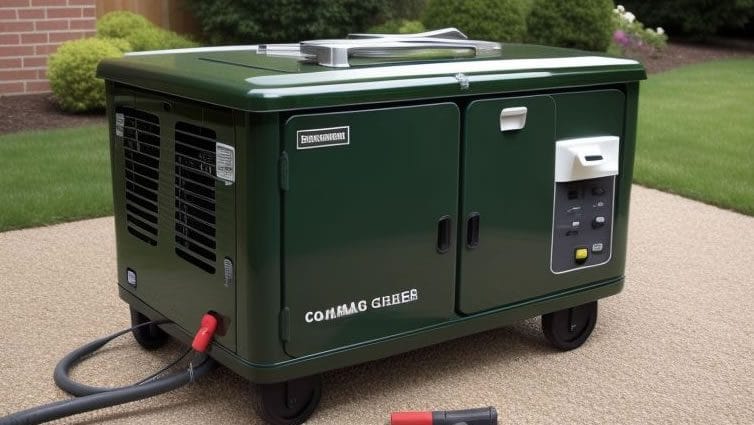
2. Overloading the Generator
Your generator can only handle so much power, and overloading it is one of the most common mistakes. Every generator has a wattage limit, and exceeding that can cause the generator to overheat, shut down, or even break. Before you plug in any appliances, make sure you calculate the total wattage you’ll be using.
If you’re wondering, “Can a portable generator power a house?” the answer depends on the appliances you need. Essential items like your refrigerator, lights, and a few electronics should be your priority, but avoid plugging in high-wattage appliances like air conditioners or heaters if your generator can’t handle it. Make sure to read your generator’s manual to know its capacity and use it within safe limits.
3. Not Using a Transfer Switch
A common mistake is plugging the generator directly into your home’s electrical system without using a transfer switch. This is extremely dangerous and can create a condition called backfeeding, where electricity flows back through the power lines, endangering utility workers and neighbors. A transfer switch safely connects the generator to your home’s circuit breaker, preventing this hazard.
If your goal is to power your home efficiently, you’ll need to invest in a transfer switch. It’s an essential safety device that also allows you to easily control which circuits the generator powers. You can’t expect a portable generator to power a house safely without this key piece of equipment.
4. Forgetting to Store Fuel Properly
Another mistake people make is not storing their generator fuel correctly. Gasoline can go bad over time, and using old fuel can cause your generator to run poorly or not start at all. You should always store fuel in a proper gas can with a tight seal and keep it in a cool, dry place. Don’t forget to add a fuel stabilizer if you plan on storing fuel for long periods.
Additionally, never store fuel close to your generator when it’s running. Generators generate heat, and having gasoline nearby can create a fire hazard. Also, remember to turn off the generator and let it cool before refueling to avoid any accidental fires or burns.
5. Neglecting Regular Maintenance
Your generator is like any other machine—it needs regular maintenance to run smoothly. One of the biggest mistakes you can make is forgetting to check and change the oil, clean the air filters, or inspect the spark plugs. Skipping these maintenance tasks can lead to your generator breaking down right when you need it most.
You’ll want to check your generator’s manual for the recommended maintenance schedule, but generally, oil should be changed after every 100 hours of use. Regularly cleaning the air filters will also help keep your generator running efficiently. If you’re asking yourself, “Can a portable generator power a house?” you’ll need to make sure it’s well-maintained to answer that with a confident yes.
6. Not Running the Generator Periodically
Generators are often stored away for emergencies, but letting them sit unused for too long can lead to problems. If you don’t run your generator periodically, the fuel can get old, parts can corrode, and it might not start when you really need it.
Make it a habit to run your generator every few months, even if it’s just for a few minutes. This keeps the engine lubricated and ensures that everything is working properly. It’s also a great time to check the oil, filters, and other key components so that you’re prepared for the next power outage.
7. Using Cheap or Improper Extension Cords
Another mistake to avoid is using the wrong type of extension cords. Cheap or low-quality extension cords can’t handle the power output from your generator and can lead to overheating, fires, or damage to your appliances. Always use heavy-duty, outdoor-rated extension cords that can handle the wattage of the appliances you’re powering.
Also, make sure the cords are long enough to place the generator at a safe distance from your home. Running a generator close to your house to save on extension cord length can expose you to dangerous carbon monoxide. Investing in the right cords now will save you from headaches and hazards later.
If you are looking for a budget friendly, durable Generator then we can recommend you Champion 4500-Watt Portable Inverter Generator. Check it out!

